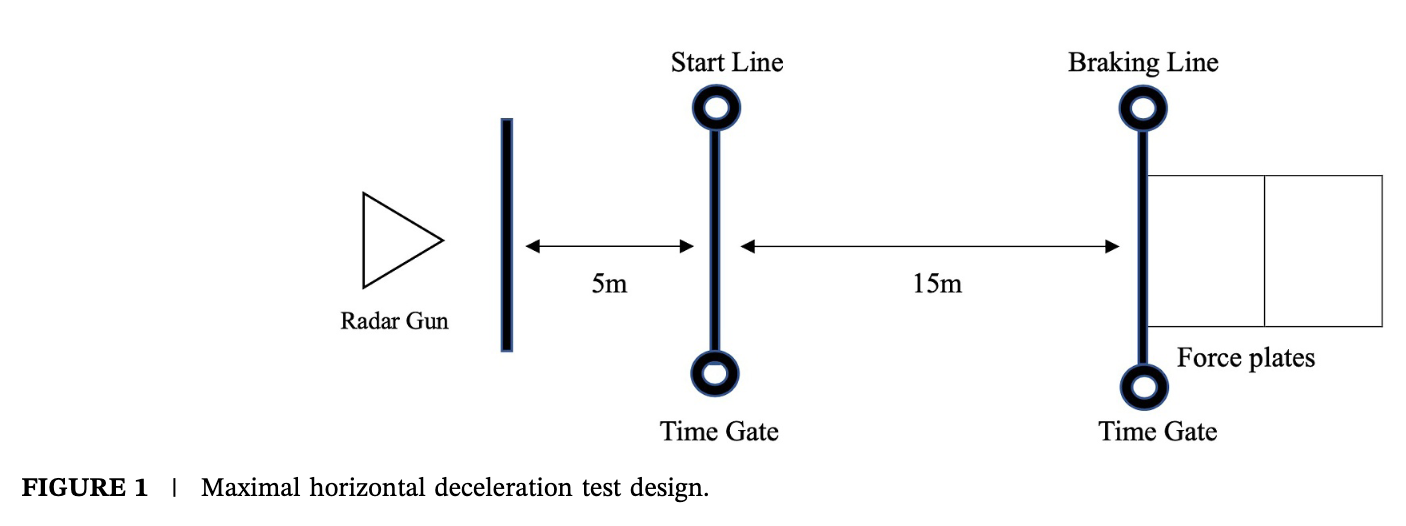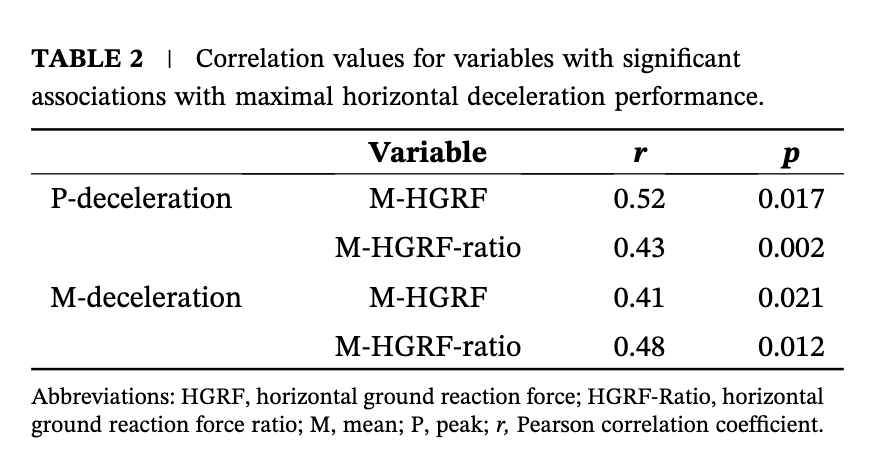Deceleration is key for team sport performance and is associated with high mechanical loads.
Noncontact ACL injuries often occur during high-speed deceleration, raising concerns that “better” deceleration performance could mean greater knee loading and injury risk.
The primary purpose of the study was to examine whether biomechanical determinants of maximal horizontal deceleration correlate with surrogate markers of noncontact ACL injury.
Can athletes improve their deceleration performance without simultaneously increasing mechanical loads on the knee that would elevate ACL injury risk?
What Did the Researchers Do?
Participants
- 32 male trained team-sport athletes (soccer, rugby; age ~22; back squat ≥1.5x bodyweight).
Protocol
- Athletes performed a 15m maximal sprint immediately followed by a maximal horizontal deceleration.
- Motion capture and force plates were used to assess the first braking step.
- Deceleration was tracked via radar.

Variables Measured
- Peak and mean deceleration performance.
- Ground reaction forces (GRF): vertical, horizontal, resultant, and their ratios.
- Knee joint loads: flexion moment (KFM), abduction moment (KAM), internal rotation moment (KIRM).
- Kinematics: angles at contact, ROM.
What were the results?
- Better deceleration performance correlated with:
- Greater horizontal braking GRF (r = 0.41–0.52) and horizontal GRF ratio (r = 0.43–0.48).
- These correlations were moderate-to-large.
- No significant correlation was found between deceleration performance and knee joint loading metrics (KFM, KAM, KIRM).
- Higher knee loads were associated with:
- Higher vertical and resultant GRF, not horizontal GRF.
- Shorter ground contact times also correlated with higher knee loads.

What Does This Mean?
- Deceleration performance seems to rely more on horizontal braking forces, not vertical loading.
- Coaches can teach athletes to optimize horizontal force application without necessarily increasing risky knee moments.
Limitations
- Only first braking step analyzed; knee loading may accumulate differently across multiple steps.
- Population limited to young, male trained athletes; results may not generalize to other populations (e.g., female athletes or those with ACLR history).
- Trunk motion was not analyzed and it may also influence knee joint loads.
Coach's Takeaway
- Focus on horizontal force production and technical positioning (center of mass behind base of support) for efficient deceleration.
- Eccentric and reactive strength training should complement technique work to handle high braking loads safely.
- Deceleration training can improve performance without necessarily increasing ACL injury risk, when done well.
I hope this helps,
Ramsey
Reference
Lin J, Dos'Santos T, Li W, Wang X, Turner A. (2025). Is There a Performance-Injury Conflict Between Maximum Horizontal Deceleration and Surrogates of Noncontact ACL Injury? European Journal of Sport Science.




